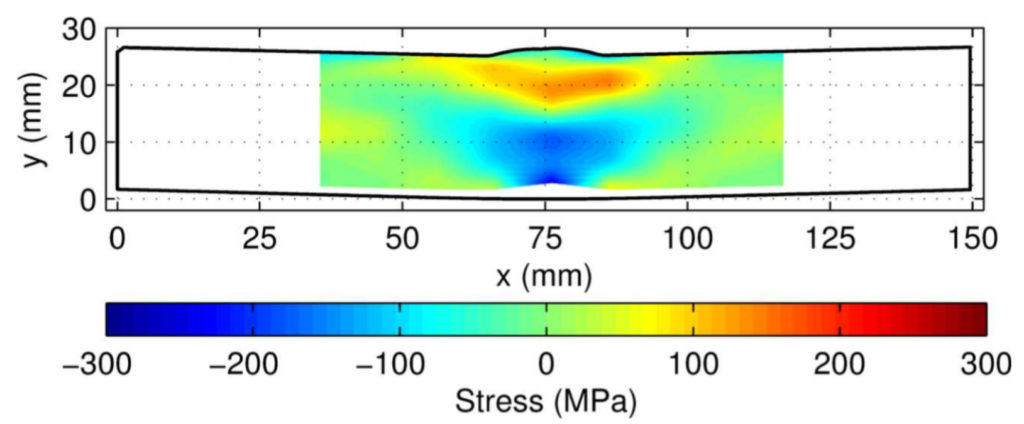Hill Engineering recently published new research detailing our efforts to optimize the experimental technique for our PSR Biaxial mapping process, which generates a 2D map of residual stress. The paper is titled Measurement Layout for Residual Stress Mapping Using Slitting and appears in Experimental Mechanics. The abstract text is available here along with a link to the publication.
Residual stress spatial mapping has been developed using various measurement methods, one such method comprising a multiplicity of one-dimensional slitting method measurements combined to form a two-dimensional (2D) map. However, an open question is how to best distribute the individual slitting measurements for 2D mapping. This paper investigates the efficacy of different strategies for laying out the individual slitting measurements when mapping in-plane residual stress in thin stainless steel slices removed from a larger dissimilar metal weld. Three different measurement layouts are assessed: independent measurements on nominally identical specimens (i.e., one slitting measurement per specimen, with many specimens), repeatedly bisecting a single slice, and making nominally sequential measurements from one side of the specimen towards the other side of the specimen. Additional comparison measurements are made using neutron diffraction. The work shows little difference between the independent and bisecting slitting measurement layouts, and some differences with the sequential measurements. There is good general agreement between neutron diffraction measurement data and the data from the independent and bisecting layouts. This work suggests that when using slitting to create a 2D map of in-plane residual stress, a cutting layout that repeatedly bisects the specimen works well, requires a small number of specimens, and avoids potential errors from geometric asymmetry or measurement sequence.

If you are interested, the full publication is available here.